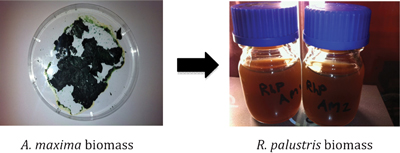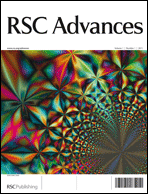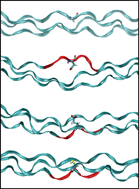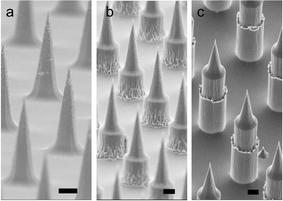Issue 7 is now available online! This issue contains 3 review articles, 25 communications and 50 full papers written by authors from 20 countries. From South America, North America, Europe, Middle East, and Asia, many scientists have chosen to publish their work with RSC Advances.
To whet your appetite, here is a taster of what is published in issue 7:
Three-component photoinitiating systems: towards innovative tailor made high performance combinations
Jean Pierre Fouassier and Jacques Lalevée
RSC Adv., 2012, 2, 2621-2629
DOI: 10.1039/C2RA00892K
Recent developments in the molecular recognition of carbohydrates by artificial receptors
Monika Mazik
RSC Adv., 2012, 2, 2630-2642
DOI: 10.1039/C2RA01138G
Graphene oxide and its reduction: modeling and experimental progress
Shun Mao, Haihui Pu and Junhong Chen
RSC Adv., 2012, 2, 2643-2662
DOI: 10.1039/C2RA00663D
ESI-MS mechanistic studies of Wacker oxidation of alkenes: dinuclear species as catalytic active intermediates
Dominique Harakat, Jacques Muzart and Jean Le Bras
RSC Adv., 2012, 2, 3094-3099
DOI: 10.1039/C2RA01204A
Ligand density and clustering effects on endocytosis of folate modified nanoparticles
Emilia Moradi, Driton Vllasaliu, Martin Garnett, Franco Falcone and Snow Stolnik
RSC Adv., 2012, 2, 3025-3033
DOI: 10.1039/C2RA01168A
Enhancing the efficiency of a dye sensitized solar cell due to the energy transfer between CdSe quantum dots and a designed squaraine dye
Lioz Etgar, Jinhyung Park, Claudia Barolo, Vladimir Lesnyak, Subhendu K. Panda, Pierluigi Quagliotto, Stephen G. Hickey, Md. K. Nazeeruddin, Alexander Eychmüller, Guido Viscardi and Michael Grätzel
RSC Adv., 2012, 2, 2748-2752
DOI: 10.1039/C2RA20192E
Efficient small molecule organic semiconductor containing bis-dimethylfluorenyl amino benzo[b]thiophene for high open circuit voltage in high efficiency solution processed organic solar cell
Jooyoung Kim, Haye Min Ko, Nara Cho, Sanghyun Paek, Jae Kwan Lee and Jaejung Ko
RSC Adv., 2012, 2, 2692-2695
DOI: 10.1039/C2RA01271E
Exploiting the use of ionic liquids to access phosphorodiamidites
Kerri Crossey, Christopher Hardacre, Marie E. Migaud and Sarah E. Norman
RSC Adv., 2012, 2, 2988-2993
DOI: 10.1039/C2RA20131C
Reversible polymerization of novel monomers bearing furan and plant oil moieties: a double click exploitation of renewable resources
Carla Vilela, Letizia Cruciani, Armando J. D. Silvestre and Alessandro Gandini
RSC Adv., 2012, 2, 2966-2974
DOI: 10.1039/C2RA20053H
Columnar mesophases of luminescent polycatenar liquid crystals incorporating a 1,3-substituted benzene ring interconnecting two 1,3,4-oxadiazoles
Jianchuan Tang, Rong Huang, Hongfei Gao, Xiaohong Cheng, Marko Prehm and Carsten Tschierske
RSC Adv., 2012, 2, 2842-2847
DOI: 10.1039/C2RA01362B
All of our 2011 and 2012 articles are free to access subject to a simple registration process. To browse our latest issue, please click here.
In order to keep up to date with our latest articles, sign up to receive our table of content alert or our newsletter.
 Adrian Fisher and colleagues at the University of Cambridge, UK, have grown purple bacteria Rhodopseudomonas palustris, which fed on cyanobacteria Arthrospira maxima for carbon source. The bacteria duo was used in microbial fuel cell applications. Rhodopseudomonas palustris uses light for energy but does not use carbon dioxide as a carbon source, so the purple bacteria fed on the cyanobacteria for its carbon source.
Adrian Fisher and colleagues at the University of Cambridge, UK, have grown purple bacteria Rhodopseudomonas palustris, which fed on cyanobacteria Arthrospira maxima for carbon source. The bacteria duo was used in microbial fuel cell applications. Rhodopseudomonas palustris uses light for energy but does not use carbon dioxide as a carbon source, so the purple bacteria fed on the cyanobacteria for its carbon source.












